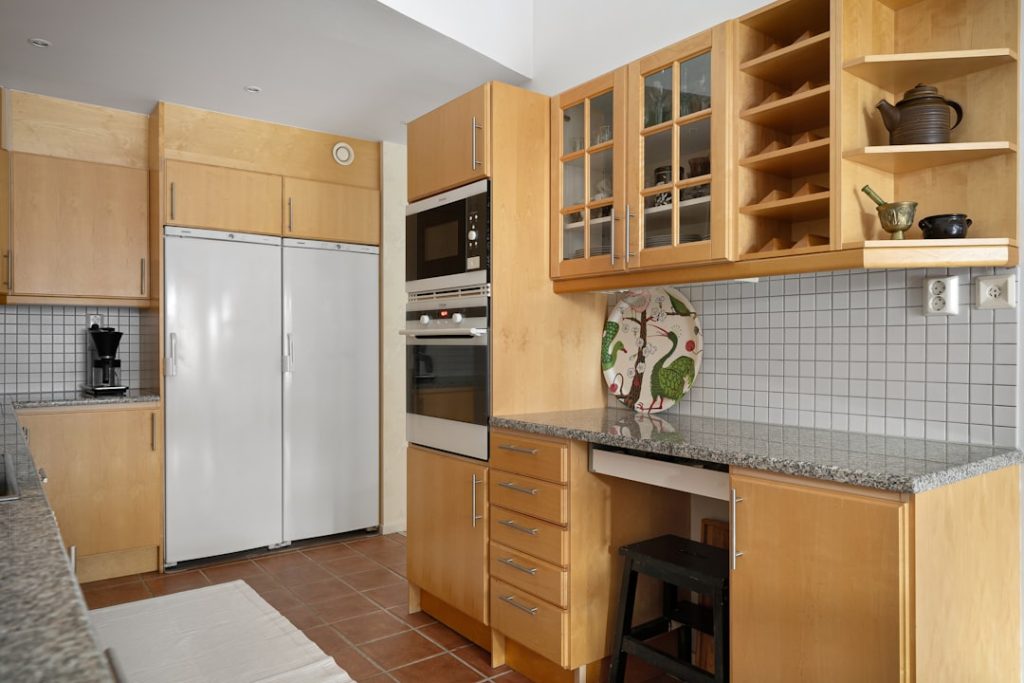When embarking on a kitchen renovation, the first and most crucial step is establishing a realistic budget. This budget serves as a financial blueprint that guides every decision throughout the renovation process. To create an effective budget, homeowners should begin by assessing their current financial situation, including savings, income, and any potential financing options.
It is essential to determine how much money can be allocated to the renovation without compromising other financial obligations. A well-thought-out budget not only helps in managing expenses but also sets clear expectations for the scope of the project. In addition to determining the overall budget, it is vital to break down the costs into specific categories.
These categories typically include materials, labor, appliances, and permits. For instance, cabinetry and countertops often represent a significant portion of the budget, so homeowners should research various options and price ranges. By itemizing expenses, it becomes easier to identify areas where adjustments can be made if necessary.
Furthermore, it is wise to include a contingency fund—typically around 10-20% of the total budget—to account for unexpected costs that may arise during the renovation process.
Key Takeaways
- Budgeting for a kitchen renovation is essential to avoid overspending and to prioritize expenses.
- Factors such as the size of the kitchen, quality of materials, and labor costs can significantly affect the overall cost of a renovation.
- Choosing the right materials for a kitchen renovation involves considering durability, maintenance, and aesthetic appeal.
- Hiring professionals for a kitchen renovation ensures quality workmanship, while DIY projects can save money but may require more time and effort.
- Hidden costs such as permits, disposal fees, and unexpected structural issues should be considered when budgeting for a kitchen renovation.
Factors that Affect the Cost of a Kitchen Renovation
Several factors can significantly influence the overall cost of a kitchen renovation. One of the primary considerations is the size of the kitchen itself. Larger kitchens generally require more materials and labor, which can drive up costs.
Additionally, the complexity of the design plays a crucial role; intricate layouts with custom cabinetry or unique architectural features will typically incur higher expenses than simpler designs. Homeowners should carefully evaluate their kitchen’s layout and consider how changes might impact both functionality and cost. Another critical factor is the choice of appliances and fixtures.
High-end appliances, such as professional-grade ovens or energy-efficient refrigerators, can substantially increase the budget. Conversely, opting for mid-range or budget-friendly appliances can help keep costs in check while still providing quality functionality. Additionally, labor costs can vary widely depending on location and the expertise of the contractors involved.
In urban areas, for example, labor rates may be significantly higher than in rural regions. Homeowners should obtain multiple quotes from contractors to ensure they are getting competitive pricing while also considering the quality of work.
Choosing the Right Materials for Your Kitchen Renovation

Selecting the right materials is a pivotal aspect of any kitchen renovation, as it directly impacts both aesthetics and functionality. When choosing materials for countertops, flooring, and cabinetry, homeowners should consider durability, maintenance requirements, and style preferences. For instance, granite and quartz are popular choices for countertops due to their resilience and variety of colors and patterns.
However, they can be more expensive than laminate options, which may appeal to budget-conscious homeowners seeking a cost-effective solution. Flooring is another critical element that requires careful consideration. Hardwood floors offer timeless beauty but may require more maintenance than tile or vinyl options.
On the other hand, luxury vinyl planks have gained popularity for their affordability and ease of installation while mimicking the appearance of natural wood or stone. Ultimately, the choice of materials should align with both personal taste and practical needs, ensuring that the kitchen remains functional and visually appealing for years to come.
Deciding whether to hire professionals or undertake a DIY approach for a kitchen renovation is a significant consideration that can affect both the outcome and cost of the project. Hiring professionals—such as contractors, designers, and specialized tradespeople—can provide expertise that ensures high-quality workmanship and adherence to local building codes. Professionals often have access to resources and materials that may not be available to the average homeowner, which can enhance the overall quality of the renovation.
However, opting for a DIY approach can lead to substantial savings if homeowners possess the necessary skills and experience. Simple tasks like painting cabinets or installing backsplash tiles can be manageable for those with a bit of know-how. Nevertheless, it is essential to recognize one’s limitations; complex plumbing or electrical work should always be left to licensed professionals to avoid potential hazards or costly mistakes.
Ultimately, homeowners must weigh their skills against their vision for the renovation to determine which approach will yield the best results.
Hidden Costs to Consider in a Kitchen Renovation
| Hidden Costs | Description |
|---|---|
| Structural Changes | Costs related to moving or removing walls, adding windows, or changing the layout of the kitchen. |
| Permit Fees | Costs associated with obtaining permits for the renovation project. |
| Electrical Upgrades | Costs for upgrading electrical wiring, outlets, or adding new lighting fixtures. |
| Plumbing Changes | Costs for relocating or adding new plumbing fixtures, pipes, or drains. |
| Appliance Installation | Costs for installing new appliances, including hooking up gas lines or electrical connections. |
| Unexpected Repairs | Costs for fixing hidden damage or addressing unforeseen issues during the renovation process. |
While many homeowners focus on visible expenses during a kitchen renovation, hidden costs can quickly add up and derail budgets if not accounted for in advance. One common hidden cost is related to structural changes; if walls are removed or moved, additional expenses may arise from reinforcing structures or updating electrical systems. Similarly, if plumbing needs to be relocated or upgraded to accommodate new appliances or fixtures, these costs can escalate quickly.
Another often-overlooked expense is related to permits and inspections. Many municipalities require permits for significant renovations, which can incur fees that vary widely depending on location and project scope. Additionally, inspections may be necessary at various stages of the renovation process to ensure compliance with local building codes.
Homeowners should research local regulations early in the planning phase to avoid surprises later on.
Ways to Save Money on a Kitchen Renovation
There are numerous strategies homeowners can employ to save money during a kitchen renovation without sacrificing quality or aesthetics. One effective approach is to prioritize cosmetic updates over structural changes. For example, instead of completely replacing cabinets, homeowners might consider refinishing or repainting them for a fresh look at a fraction of the cost.
Similarly, updating hardware—such as knobs and pulls—can dramatically change the appearance of cabinetry without requiring extensive work. Another way to save money is by shopping smartly for materials and appliances. Homeowners can take advantage of sales events or clearance items at home improvement stores or consider purchasing gently used appliances from reputable sources.
Additionally, opting for open shelving instead of upper cabinets can create an airy feel while reducing material costs. By being resourceful and flexible with design choices, homeowners can achieve their desired kitchen look while staying within budget.
Financing Options for a Kitchen Renovation

For many homeowners, financing a kitchen renovation is necessary to cover upfront costs. There are several financing options available that cater to different financial situations and preferences. One common method is through home equity loans or lines of credit (HELOCs), which allow homeowners to borrow against their home’s equity at relatively low-interest rates.
This option can provide substantial funds for renovations while potentially offering tax benefits. Another financing avenue is personal loans specifically designed for home improvement projects. These loans typically have fixed interest rates and repayment terms that make budgeting easier over time.
Additionally, some homeowners may explore credit cards with promotional offers for home improvement purchases; however, it is crucial to be mindful of interest rates once promotional periods end. Ultimately, homeowners should carefully evaluate their financial situation and consider consulting with a financial advisor to determine the best financing option for their renovation needs.
Getting the Most Value Out of Your Kitchen Renovation Investment
Maximizing value from a kitchen renovation involves strategic planning and thoughtful execution throughout the process. One key aspect is focusing on features that enhance both functionality and appeal without over-customizing for personal tastes that may not resonate with future buyers. For instance, incorporating timeless design elements—such as neutral color palettes or classic cabinetry styles—can ensure that the kitchen remains attractive to potential buyers down the line.
Additionally, investing in energy-efficient appliances can provide long-term savings on utility bills while also appealing to environmentally conscious buyers. Features like LED lighting and smart home technology can further enhance both convenience and energy efficiency in modern kitchens. By considering both current needs and future resale value during the renovation process, homeowners can create a kitchen that not only meets their lifestyle requirements but also serves as a valuable asset in their home’s overall worth.



